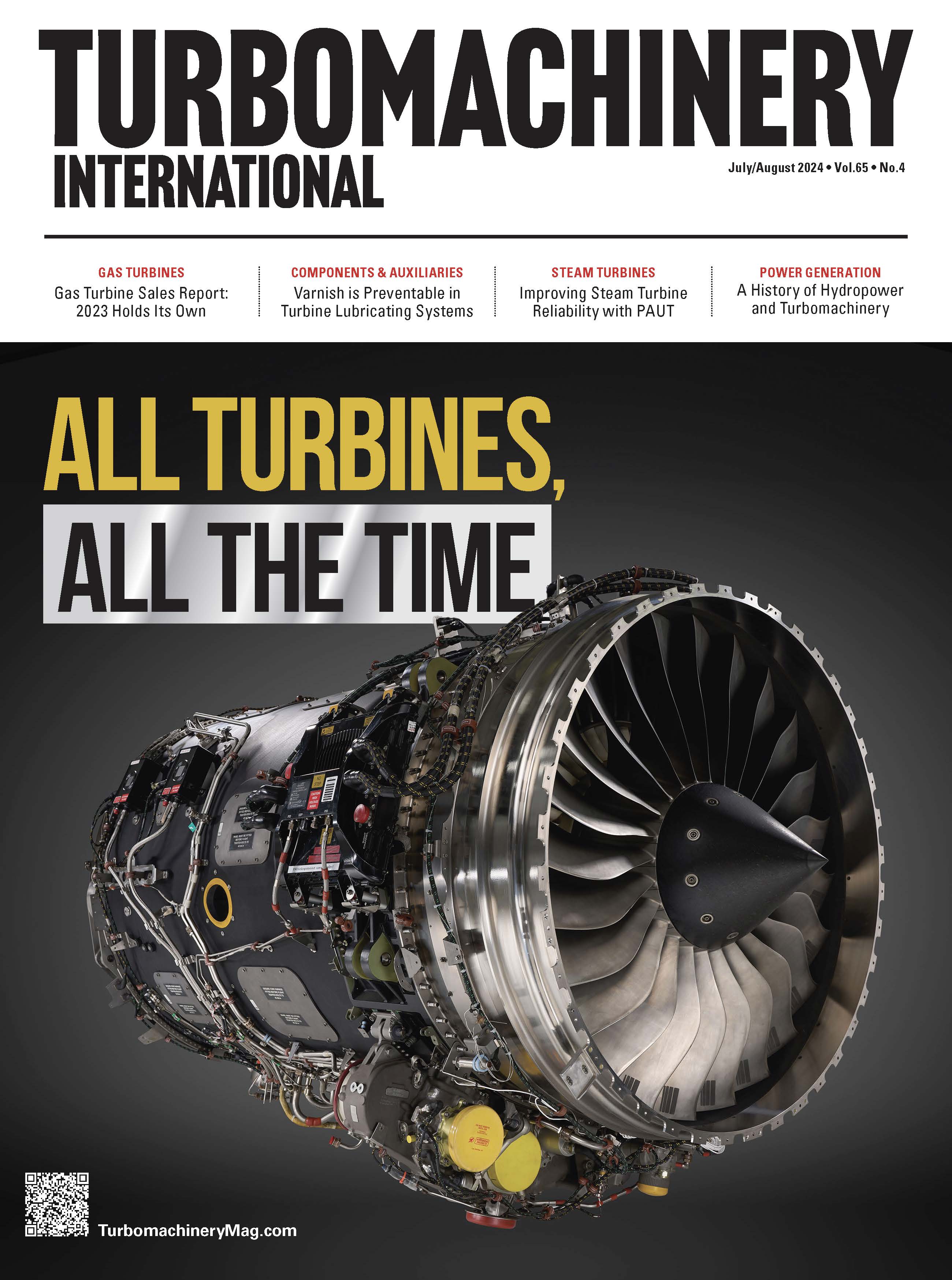Turbo Tips: Useful Guidelines & Technical Notes on Steam Turbine Control Systems
A steam turbine’s control system should ensure stable operation throughout each phase: start-up, shutdown, and parallel operation.
Steam turbines have been widely used as drivers for different machinery and equipment, and are used in many industries, facilities, and plants. Steam turbine governing, a component of the turbine’s control system, controls the flow rate of steam to the turbine to regulate its speed. Speed varies due to changes in the load/operation. Therefore, the control system should constantly adjust to the turbine’s operation.
There is a wide range of control options for steam turbines to meet the varying needs of different services and applications. A suitable control system should be developed for each application.
STEAM TURBINES
There are two basic types of steam turbines: condensing and back-pressure. Condensing steam turbines operate with exhaust pressures less than atmospheric pressure; back-pressure steam turbines operate with exhaust pressures greater than atmospheric pressure. Condensing steam turbines tend to be larger in size and power rating while back-pressure steam turbines are smaller in size and usually operate at faster rotational speeds.
Steam turbines can be used in direct-drive trains, but they often operate the driven equipment, i.e., a pump, compressor, generator, etc., through a speed-reduction gear unit. This allows the steam turbine to be configured to the optimum speed and efficiency for relatively low-speed-driven applications.
CONTROL OF A STEAM TURBINE
The modern digital steam turbine control system is designed to control the main steam flow to the turbine under all operational conditions using the turbine throttle, governor, and control valves. A control system should ensure stable operation throughout each phase, including start-up, shutdown, parallel operation, etc. Full-load rejections are critical cases and should be controlled to prevent an over-speed condition and potential damages.
Speed and load controls are usually required. The speed control is the primary control loop for many steam turbines. Without speed control, it cannot reliably and safely start or operate. The steam inlet is controlled by a series of valves, often multi-valve assembly, working in concert. Typically, one steam control device can only control one parameter. The operational flexibility is increased when the controlled parameter’s set point is influenced as a function of secondary parameters. For example, the steam turbine’s inlet steam valve controls the turbine speed, but exhaust pressure can be used to bias the speed set-point to maintain some level of exhaust pressure. This is an example of how parameters other than speed come into play, but the speed control loop ultimately ties back to the inlet steam valve system.
The actual speed (measured speed) should be weighed against the desired speed. Adjustments are then made to achieve speed balance, which is the set point. This balanced system is the heart of the control system. The logic and method of control implementation influence the turbine’s operation. The speed control loop can control the load by raising or lowering the speed reference to open or close the inlet governor valves and influence the flow of steam through the turbine. In this way, the change in steam flow may not change the speed; however, it will change the load (power) depending on the flow change. Load control may be secondary for back-pressure or extraction turbines but is still a controlling parameter. For condensing turbines, load control is usually an important parameter.
INLET AND EXHAUST PRESSURE
In addition to speed and load, inlet pressure and exhaust pressure are also steam turbine-related parameters that are part of the turbine control system. Inlet pressure is controlled by manipulating the inlet governor valve system. A bias related to inlet pressure actual versus set-point values should be applied to the speed control loop. This bias is accomplished by incorporating cascade control into the system.
Exhaust-pressure control is utilized only with back-pressure turbines and comes into play when the exhaust steam is used in a plant that requires close steam pressure control. As with inlet pressure, exhaust pressure is usually controlled by manipulating the inlet governor valve system. A bias should be applied to the speed control loop related to exhaust pressure actual compared to the set point. Like inlet pressure, cascade control is often incorporated into the control system.
MECHANICAL-DRIVE STEAM TURBINES
Steam turbines are often employed in mechanical-drive applications involving driven equipment such as pumps, compressors, blowers, fans, etc. Parameters directly related to the speed of the turbine are controlled by adjusting the output signal in the control system limited to the driven equipment’s output parameters, such as discharge pressure or flow. In this case, the control resides inside the turbine system alongside the speed-control function.
The second option is to control the turbine speed via the remote speed set-point through a process controller or a remote-control system that calculates and sends a corrective signal to adjust the speed reference. In this arrangement, all control algorithms relative to the process are external to the turbine control—it only receives the corrective speed signal. This arrangement is used when the process is distanced from the steam turbine or the turbine speed is indirectly related to the ultimate process under control.
Amin Almasi is a Chartered Professional Engineer in Australia and the U.K. (M.Sc. and B.Sc. in mechanical engineering). He is a senior consultant specializing in rotating equipment, condition monitoring and reliability.
